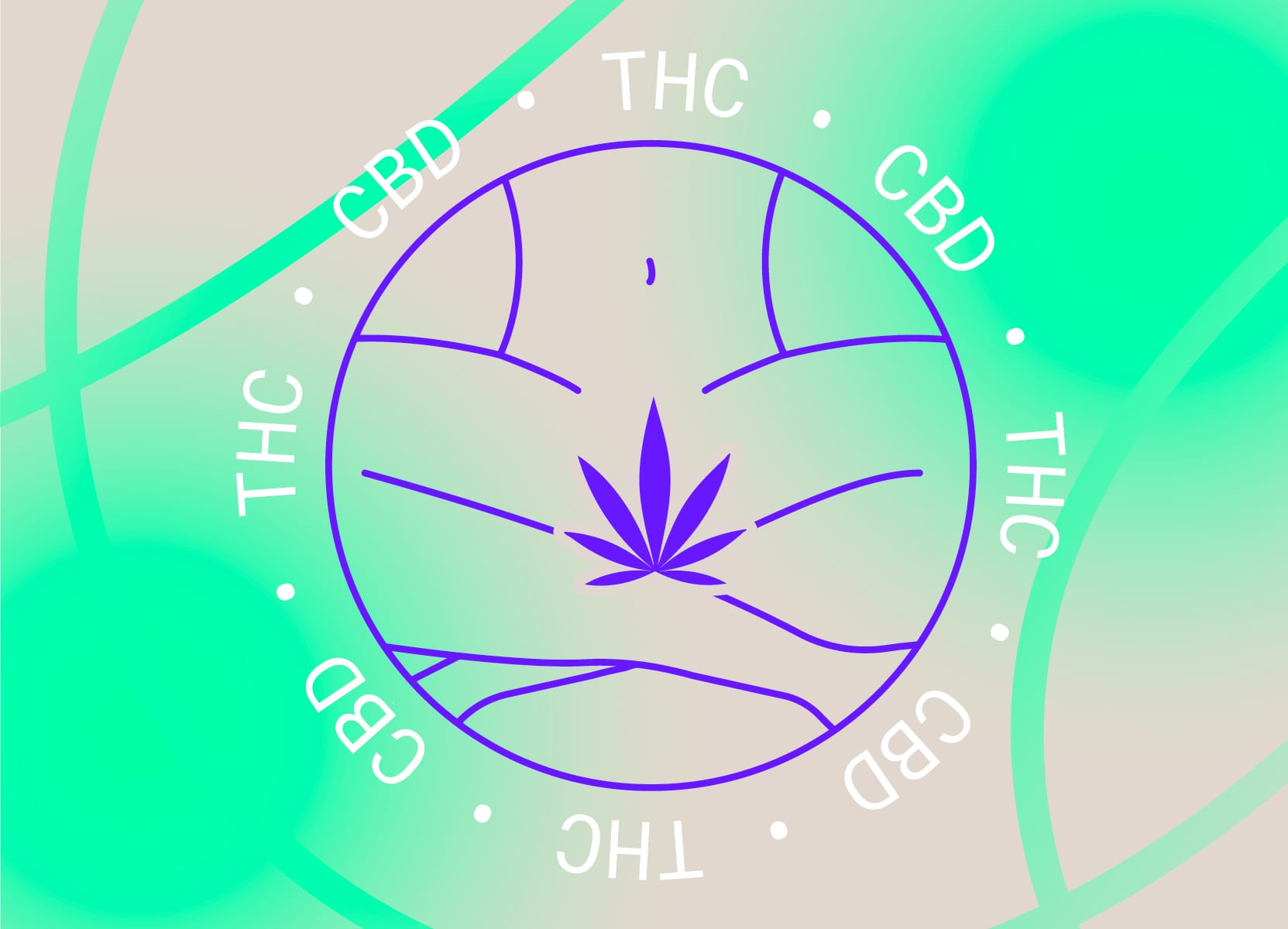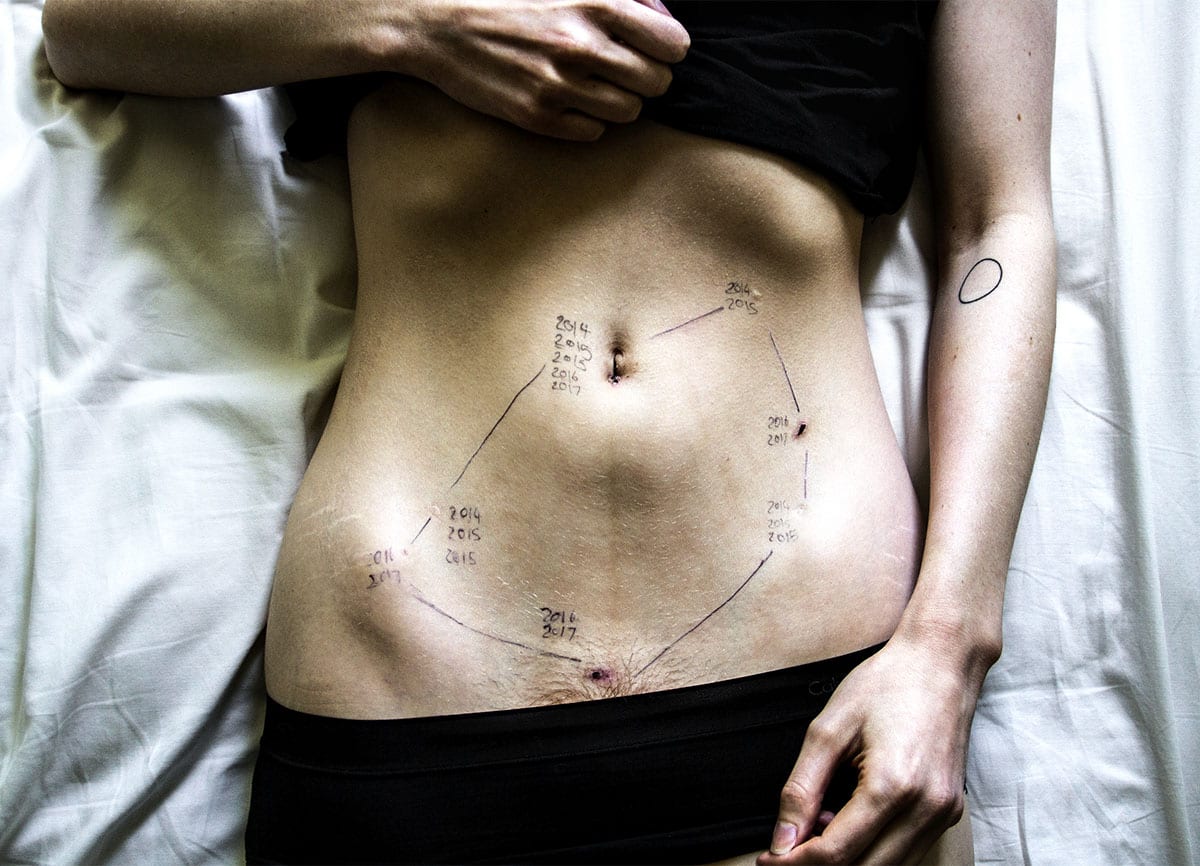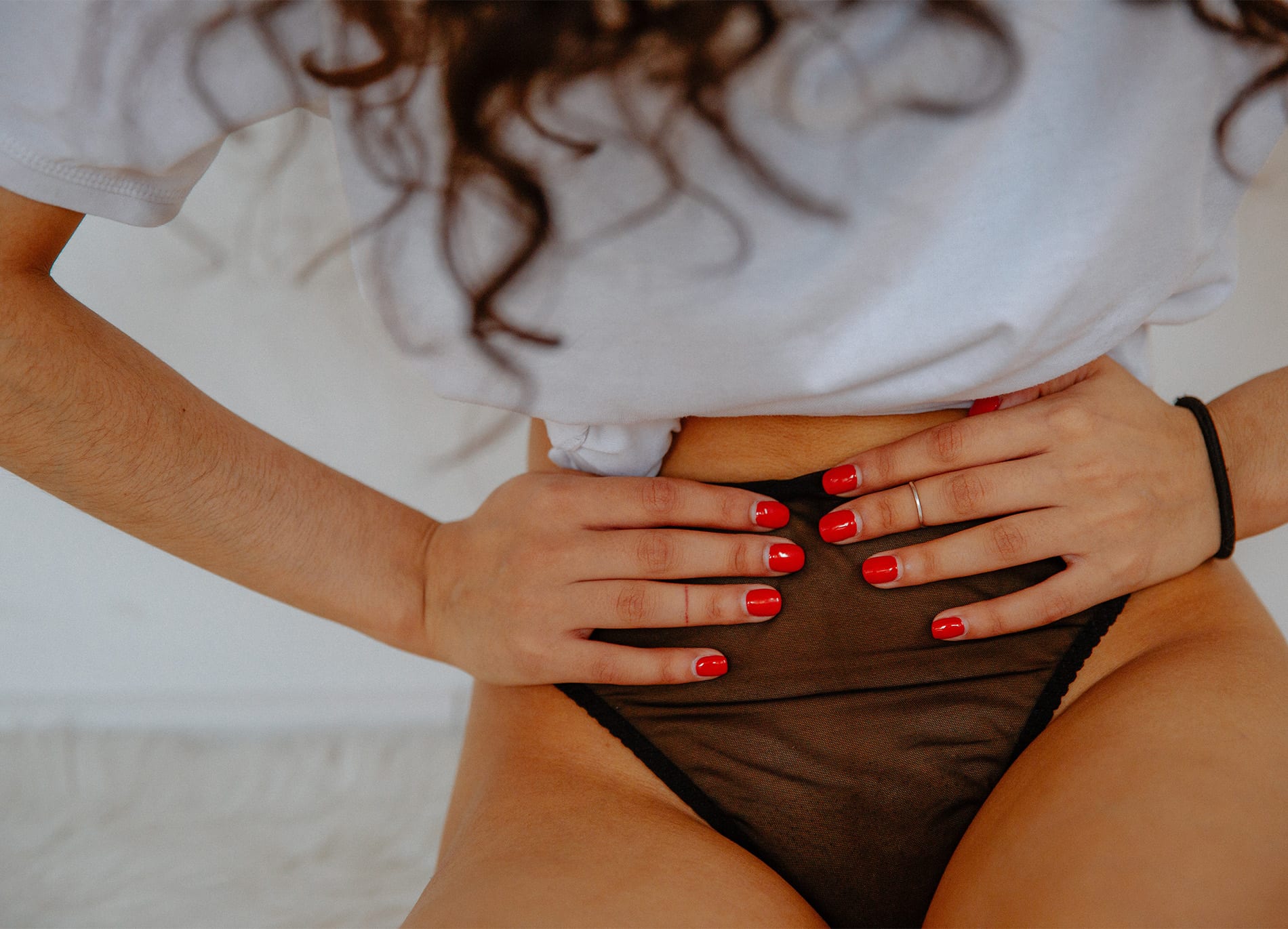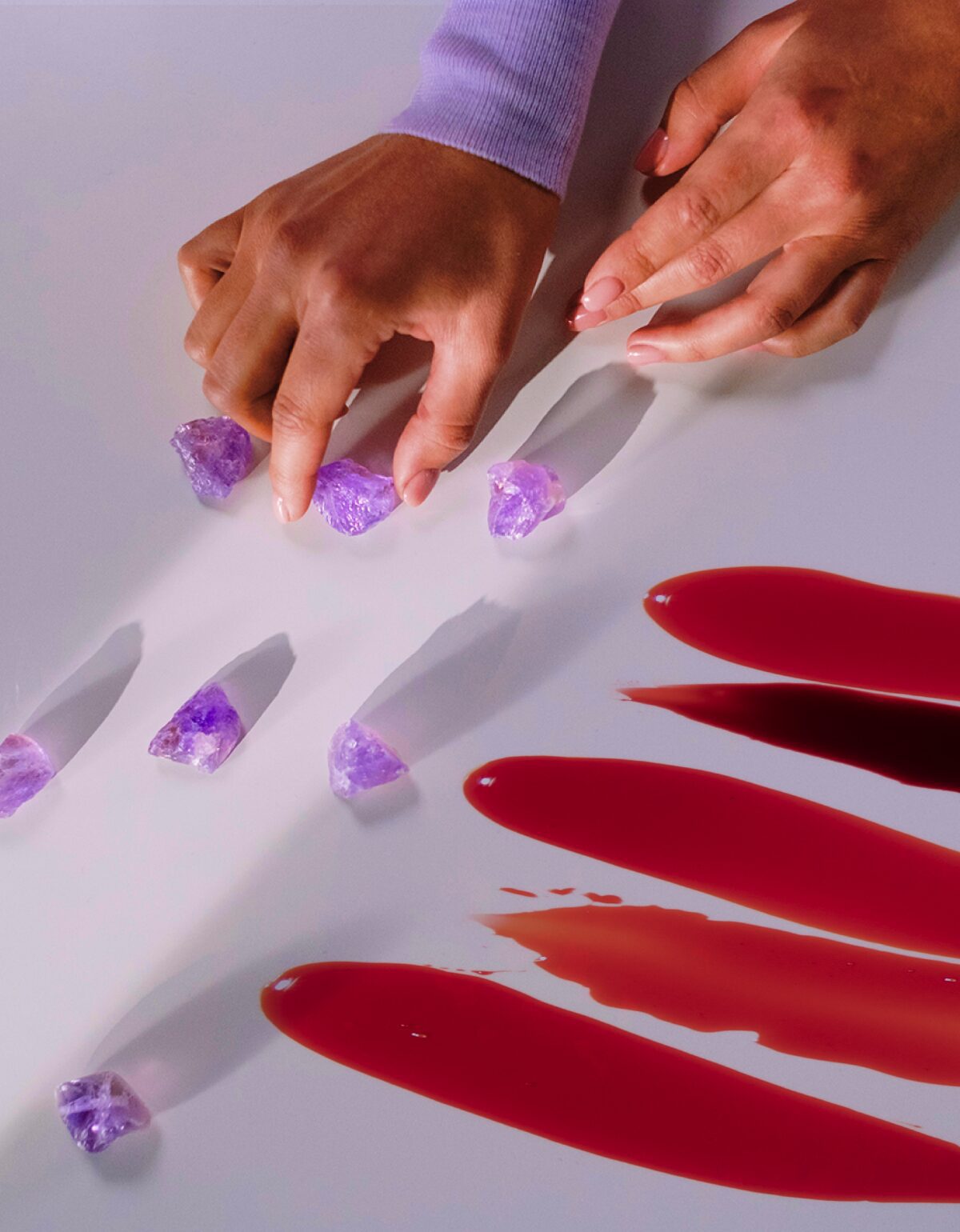No, they don’t (necessarily) get you high—and yes, they can help with period pain
Cannabis is having a moment (not that it’s all that new). As research expands, the ways in which both, recreational and medical cannabis can be purchased and consumed have broadened significantly.
Nowadays, you can find CBD products, such as lotions and balms, almost in every pharmacy or grocery store. There are CBD teas, gummies, vapes, bath bombs, tinctures, and even capsules widely available. If you’re in a state where marijuana is legal for recreational use, you can find the same items with THC. THC is the cannabis plant’s better-known compound with psychoactive properties.
While conclusive evidence surrounding CBD and THC’s pain-relieving properties is still scarce, the anecdotal support for it is enormous. Both compoundshave been touted as a “miracle cure” by many individuals suffering from endometriosis, PCOS, and other period-related conditions. There’s also (some) evidence that it can help with insomnia, anxiety, and inflammation.
One thing we know for sure, is that how you consume cannabis affects the body differently. And now, you can get your daily dose by inserting a CBD or THC suppository into your vagina.
Confused? Intrigued? We’ve got the lowdown on THC and CBD suppositories. Read on to learn more.
What is CBD? And how is it different from THC?
CBD is the abbreviation for cannabidiol. THC is the abbreviation for tetrahydrocannabinol. More specifically, “THC” is usually used to refer to delta-9-tetrahydrocannabinol. There are other variations of the molecule, for instance, you may have seen or heard of delta-8 THC.
The Endocannabinoid System (ECS)
Both CBD and THC are natural compounds derived from the very same plant, cannabis sativa. Both compounds are able to work their magic by communicating with your body’s endocannabinoid system (ECS). The ECS plays a role in regulating processes including sleep, mood, appetite, memory, reproduction, and fertility.1
While research is still uncovering more about the ECS, we do know that it’s pretty important. We actually rely on the ECS for survival. Without launching into too much scientific detail, it basically helps us maintain homeostasis. This means keeping our “operating systems” working as they should.
Walk outside on a blazing hot summer day? You can thank your ECS for signaling your body to produce sweat and cool you down. Get caught up in work and forget to eat lunch? Your ECS is responsible for triggering that growling stomach, reminding you to eat a sandwich – and keeping you from passing out.
The ECS can be broken down into three key components:
- Endocannabinoids, a type of retrograde neurotransmitter produced by your own body – and their cousin, exogenous cannabinoids, which come from an external source (i.e. the cannabis plant)
- Cannabinoid receptors, located both within the nervous system and around the body (these are what endocannabinoids and cannabinoids bond to)
- Enzymes that help break down the endocannabinoids and cannabinoids
Humans aren’t the only beings with an ECS system: All vertebrates – including cats, dogs, fish, birds, cows – produce their own endocannabinoids. THC and CBD, on the other hand, are exogenous cannabinoids (meaning they originate outside of the body).
The two confirmed cannabinoid receptors in humans that have been researched the most to date are CB1 and CB2. CB1 receptors are most prominent in the central nervous system (i.e. the brain and spinal cord). CB2 receptors are more concentrated within the peripheral nervous system (i.e. your limbs, hands, feet, etc.)

CB1 and CB2 work a bit differently when they encounter THC versus CBD. The details are complex, but we’ve done the homework to give you a rundown of what we’ve learned. Basically, THC influences the parts of your body that make you feel “high,” whereas CBD influences the parts that reduce inflammation.2
In other words, you can take a high dosage of CBD in the morning, and still function the same as always. You may, however, notice that you feel a bit more relaxed, or that your headache has diminished a bit. Many individuals can’t tolerate THC or don’t enjoy its intoxicating effects, turning to CBD instead for pain relief.
Legality of THC and CBD
While THC is starting to become more widely legalized across the United States, it’s not legal everywhere yet. Thus, there are varying rules and regulations around both CBD and THC in every state.
As of December 2018, “industrial hemp” became a legal agricultural commodity in all 50 states. However, the DEA still considers both CBD and THC (the hemp plant’s compounds) to be Schedule I controlled substances. For reference, heroin, lysergic acid diethylamide (LSD), and peyote are also classified as Schedule I controlled substances.
Hemp and cannabis and marijuana are all the same species of plant, BTW.Different strains of the plant have different cannabinoid levels of CBD and THC. Some strains have a nice balance of both, some are mostly THC, and some are mostly CBD. While science doesn’t differentiate “hemp” from “cannabis,” the law uses the term “hemp” to refer to cannabis that contains 0.3% or less THC content by dry weight. Hemp extract refers to the oil derived from the hemp plant, rich in CBD and other beneficial compounds, but low in THC. This makes it an attractive option for those seeking therapeutic effects without the psychoactive side effects commonly associated with THC such as anxiety, nausea, diarrhea, upset stomach, tiredness, etc.
Translation? Different states have different laws around the legality of THC, but CBD is now legal across all states in the US. Check out to learn more about THC legality in your state.
Okay… so, what’s a suppository? And how does it work?
A suppository is a small, cone-shaped or bullet-shaped preparation of a substance. This preparation is usually medication, and it’s meant to be inserted into either the vagina or the rectum.
Suppositories are usually only designed to work in ONE of those two places. We definitely don’t recommend putting a rectal suppository in your vagina, or vice versa. However, some CBD and THC suppositories are fine to use in either place. Just make sure to read the instructions before using a new product.
If you’ve ever treated a yeast infection with over-the-counter antifungal medication, you’ve probably come across suppositories before. Most vaginal suppositories come with an applicator that makes placement a little easier. Make sure to get the suppository all the way up the vaginal canal, just below the cervix, to minimize leakage.
Once a suppository is inside, it melts or dissolves and releases its medication. Most of the medication is then absorbed directly into your bloodstream through your vagina’s vascular walls. Medication delivered through a suppository tends to work more quickly than oral medication. The reason being is that oral medication has to pass through your digestive system before entering your bloodstream.
Do CBD (or THC) suppositories work? Is there a real benefit to consuming CBD or THC through your rectum or vagina?
There’s loads of anecdotal evidence that says yes to both of the above. It dates back to 1889, when Dr. J.W. Farlow described the use of marijuana suppositories as having “few equals in its power over nervous headaches.” In this case, he’s referring to rectal suppositories.3 In this case, he’s referring to rectal suppositories.
Let’s take a closer look at the clinical research (which is still pretty minimal).
Rectal cannabis suppositories
First, it’s important to note that we know more about administering cannabis suppositories rectally than vaginally. We can’t just assume that rectal use compares to vaginal use. We do know, however, that both the pelvic region and colon contain cannabinoid receptors, including CB1 and CB2.4 These receptors have a lot to do with how THC impacts the body.
According to a 2013 Canadian report, using rectal suppositories to administer cannabis has a big impact on the absorption of THC:
“50% of THC is usually transformed into its more psychoactive form, 11-Hydroxy-delta-9-THC, when taken orally. Rectal administration avoids these effects, whilst allowing a higher proportion of THC to reach the bloodstream […] This results in a higher bioavailability of Δ9-THC by the rectal route (52-61%) than by the oral route.”5
In plain English: A good amount of the THC you consume needs to transform into 11-hydroxy-Δ9-THC in order to experience a “high.” So, THC consumed through the bum doesn’t cause the same psychoactive effects that are experienced when taken orally.
Rectally-consumed cannabis, is, however, 52 to 61% more bioavailable than orally consumed. This effect may be limited to the immediate area, though.
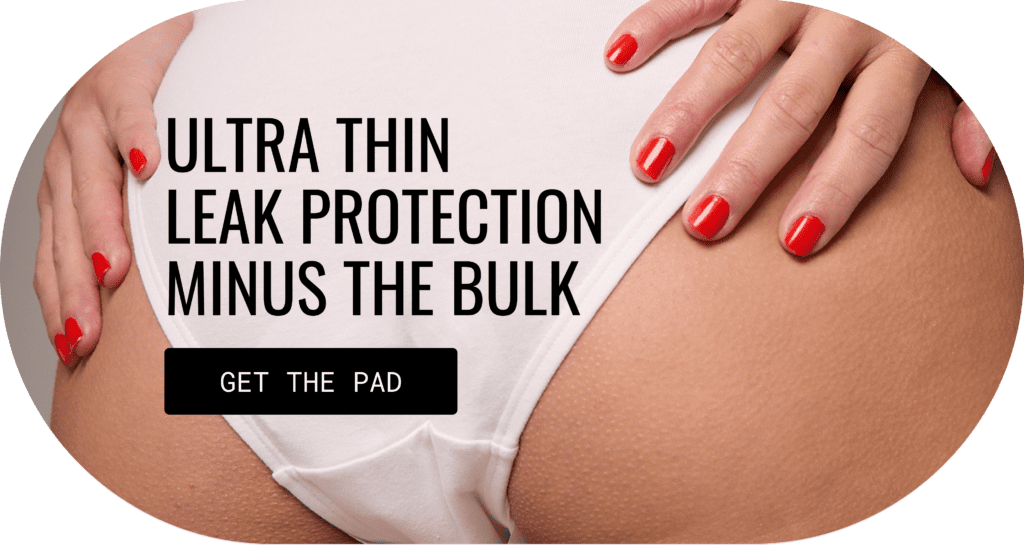
Many suppository users report that rectally-consumed cannabis tends to produce more of a “body high.” The effect is sometimes described as a general sense of relaxation and relief without the intoxication. Rectal suppositories have also shown promise when it comes to treating local inflammation and conditions like hemorrhoids.6
Vaginal cannabis suppositories
What about vaginal cannabis suppositories? Unfortunately, there’s even less research about CBD or THC bioavailability within the vagina. Most companies liken their effects to topical cannabis products (like a balm or cream designed to be applied to the skin).
As reported by Project CBD, “The absence of a ‘head high’ would seem to indicate that a suppository does not distribute a systemic dose of cannabis […] This suggests that a suppository acts more like a topical with a local effect, rather than a transdermal patch which disseminates medicine systemically through the bloodstream.”6
According to Foria Wellness, a US-based company that makes and sells natural CBD suppositories, the vagina does contain cannabinoid receptors. “Within the female reproductive tract, endocannabinoid receptors are widespread. They are most dense in the uterus, but are also found in the fallopian tubes, ovaries, vagina and vulva.”7
So, it’s possible that those receptors could allow THC to make its way into the bloodstream. But do they get you high? Probably not. But, again, that doesn’t mean the vaginally-applied cannabinoids don’t have a valuable effect on your body.
Potential benefits of cannabis vaginal suppositories include pain management, the reduction of inflammation, and localized muscle relaxation.
Further research is necessary to analyze potential impacts, however, many testimonies suggest positive results. Those suffering from pain during sex (dyspareunia) and generalized pelvic pain in particular often report beneficial effects.
What can THC and CBD suppositories help with?
Vaginal and rectal cannabis suppositories have been around for centuries. The first reported vaginal suppositories dates back to the 19th century, when they were prescribed to treat gynecological disorders and migraines.8 More recently, they’ve been used to help with the following symptoms and conditions:6
- Menstrual cramps and dysmenorrhea (painful periods)
- Abdominal pain
- Endometriosis
- Pelvic discomfort
- Post-coital pain or inflammation
- Vaginal dryness
- Pain with intercourse
- Pelvic floor muscle relaxation
Some users have found that THC or CBD suppositories—as well as topical preparations, like oils applied directly to the vulva—can help with sexual arousal.
According to Foria Wellness, “Normally, when you experience sexual arousal, blood rushes to your clitoris and vagina, creating opening, elongating and lubrication. Similarly, when you apply phytocannabinoids to your vulva, they also increase blood flow there. This effect — vasodilation — is the reason people’s eyes can redden when they get high.”9
Keep in mind that much of the information we’ve covered above applies to THC suppositories. CBD has less of an affinity for CB1 and CB2 receptors than THC (though it prefers CB2 receptors).
However, CBD does play a role in modulating several non-cannabinoid receptors and ion channels. It also acts independently of the ECS by delaying the “reuptake” of endogenous neurotransmitters such as anandamide and adenosine. These neurotransmitters impact functions like sleep and stress.9
We do have some scientific evidence in support of CBD as a treatment for period cramps. Turns out, the compound actually works similarly to NSAIDs (like Advil), inhibiting the enzyme responsible for producing prostaglandins: COX-2.10 Prostaglandins are compounds your body produces. Prostaglandins are responsible for the inflammation, uterine contractions, and pain you experience before and during your period.
Scientists recently discovered that CBD also inhibits COX-2. However, CBD doesn’t have the same annoying gastrointestinal effects that some people experience when using NSAIDs. So, whether you dose your CBD vaginally, orally, or topically, there’s a chance it could be your new premenstrual BFF.
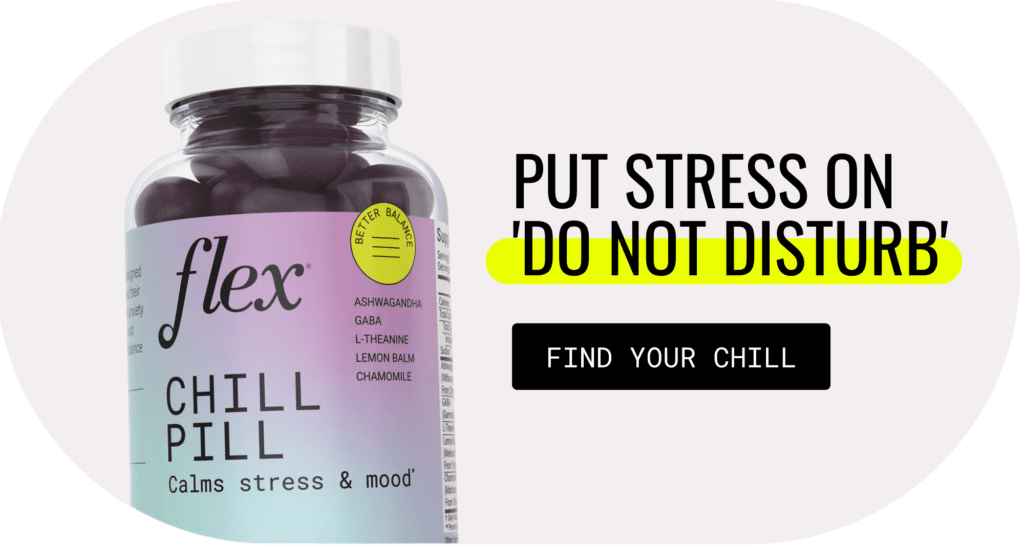
How to use CBD or THC suppositories
Getting your dose of THC or CBD via rectal or vaginal suppository is not as easy as swallowing an edible. Why? Well, mainly thanks to gravity.
Always follow the instructions provided by the manufacturer of the product you’ve purchased. Be aware that many brands do not include an applicator, meaning you might need to to insert the suppository manually.
Firstly, wash your hands and get everything in place (just as you would if you were about to insert a tampon or menstrual disc). Then, make sure you are in a comfortable position for insertion, this will help your muscles relax. Try to insert the suppository before bed, when you’re going to be laying down for a while. Otherwise, use a pad or pantyliner to protect your underwear from any potential drippage.
Cannabis suppositories: To buy or not to buy?
Whether or not cannabis suppositories could be a good fit for you has to do with a few different factors. First, ask yourself if you’re comfortable trying a product that has not yet been extensively studied. Very few adverse effects have been reported with CBD and THC suppositories. However, there isn’t a whole lot of cold, hard, scientific proof that they work, and they can get pretty expensive.
However, if the anecdotal support is enough to convince you to break out your wallet, we’re totally in favor of you doing what is right for you. Just be sure to look for brands that offer a Certificate of Analysis (COA). COA reports outline the potency, purity, exact ingredients, and possible contaminants in every batch of suppositories they produce.
As always when trying a new product, double-check the ingredients. Make sure there aren’t ingredients, additives, or fragrances that you’re allergic to, especially since it will go in a very sensitive area. It is best to do a small patch test in a small area of your body first, and check if any reaction or irritation develops.
Second, talk to your doctor if you’re considering CBD or THC suppositories to cope with a diagnosed condition like endometriosis. Doctor’s guidance is very important, especially if you’re also taking prescription medication.
Your provider will be able to explain potential risks, side effects, or interactions. They can also help place these suppositories in the context of your overall health and care.
Third, remember that accessing THC may not be possible in your state if recreational use has not yet been legalized. Restrictions around what can be sold in a dispensary very from state to state and not all dispensaries stock THC suppositories. CBD, however, is legal in all 50 states and can easily be ordered online.
Here are a few brands to try:
- Foria Wellness Relief Suppositories – 800 mg CBD
- CBD Living Suppositories – 500 mg CBD
- Endoca CBD Suppositories – 500 mg CBD
- Harmony Organic Full Spectrum Suppository – 70 mg CBD
CBD or THC suppositories could be worth a shot, especially for those who have struggled with the side effects of traditional therapies like hormonal intervention or pharmaceuticals.
As more cannabis- and vagina-related research is published, we’ll be sure to keep you updated with the facts. Check back here or send us a message at thefornix@flexfits.com with your experience or questions!
This article is informational only and is not offered as medical advice. It does not substitute for a consultation with your physician. If you have any gynecological/medical concerns or conditions, please consult your physician.
© 2025 The Flex Company. All Rights Reserved.
